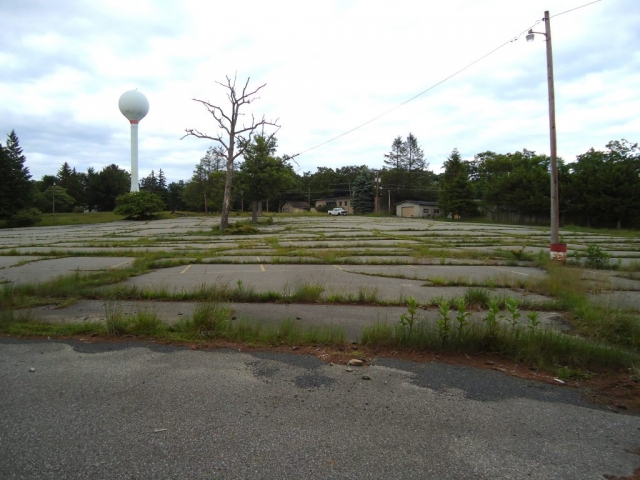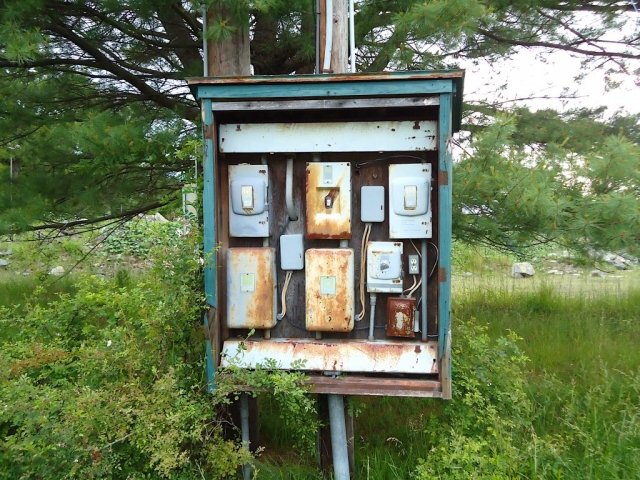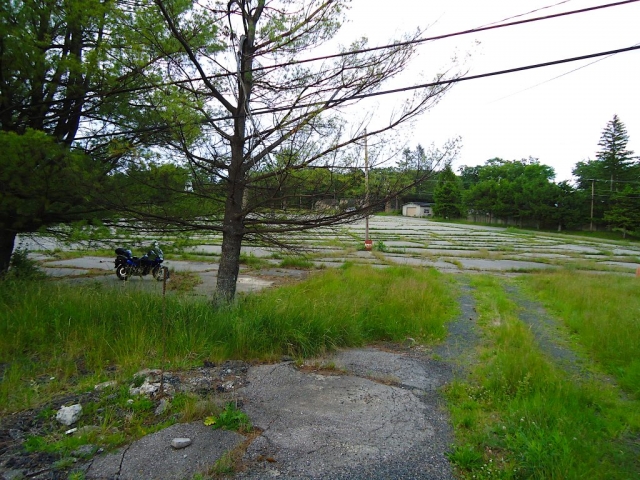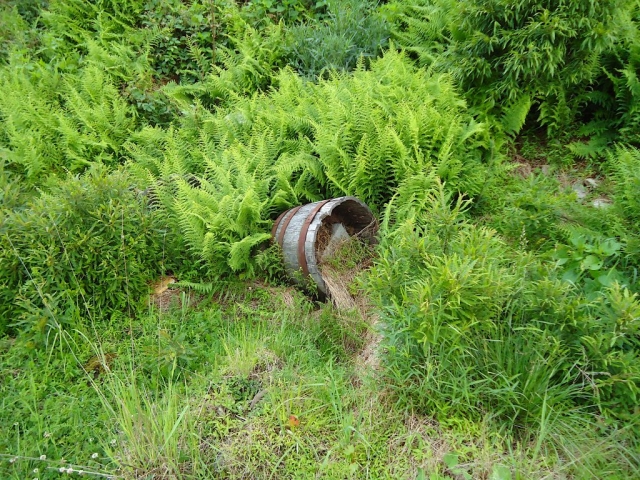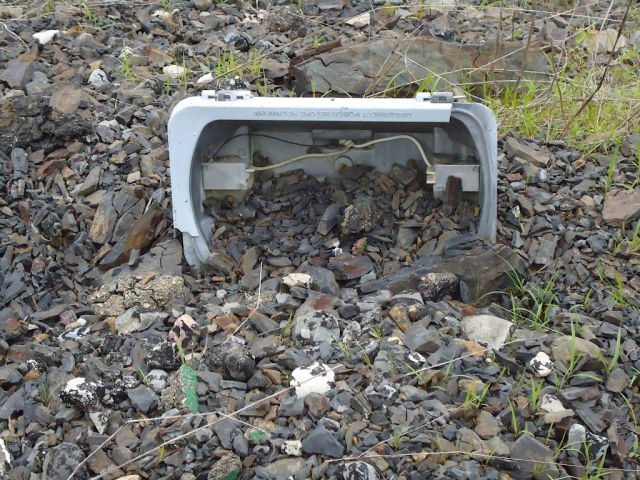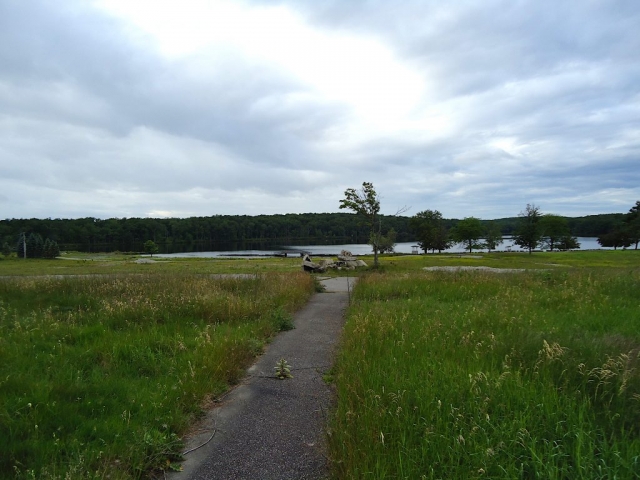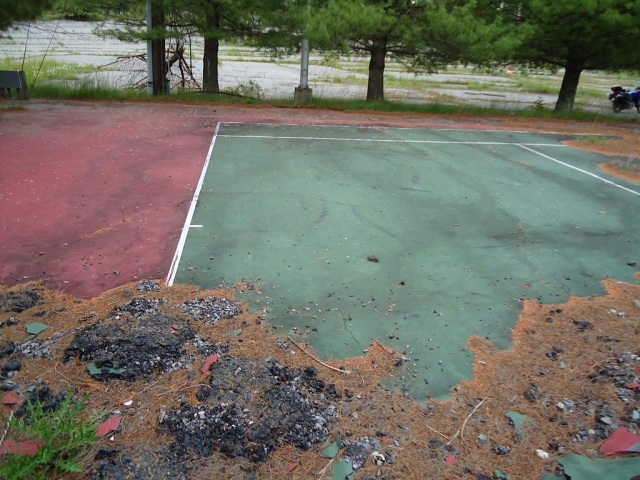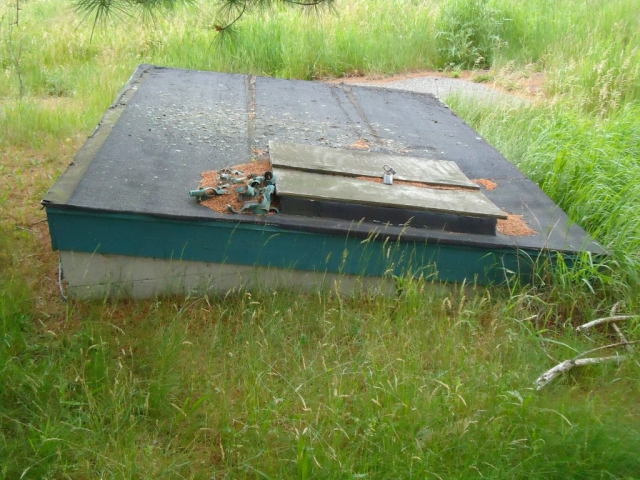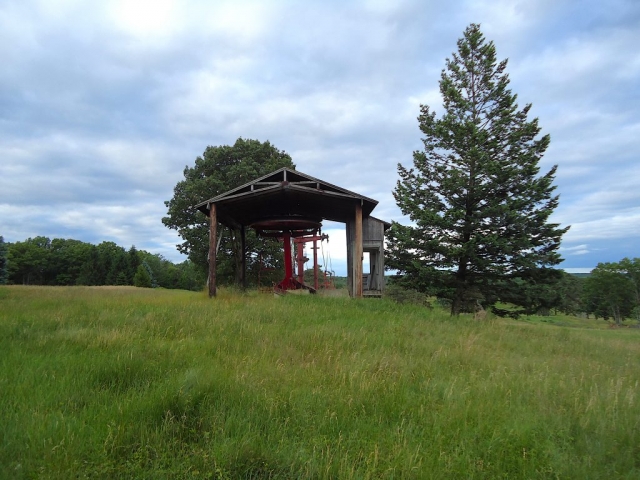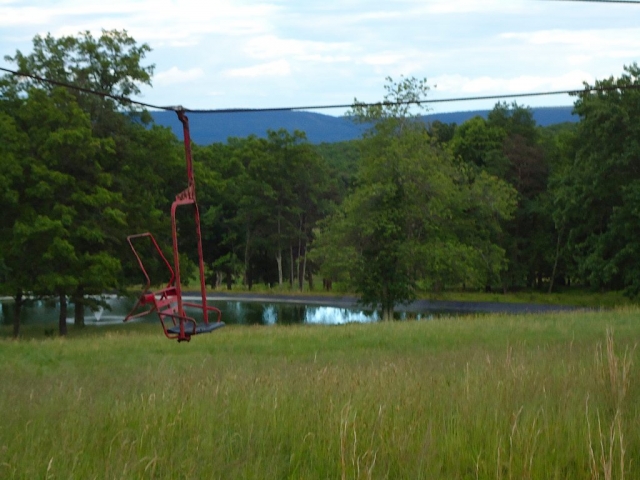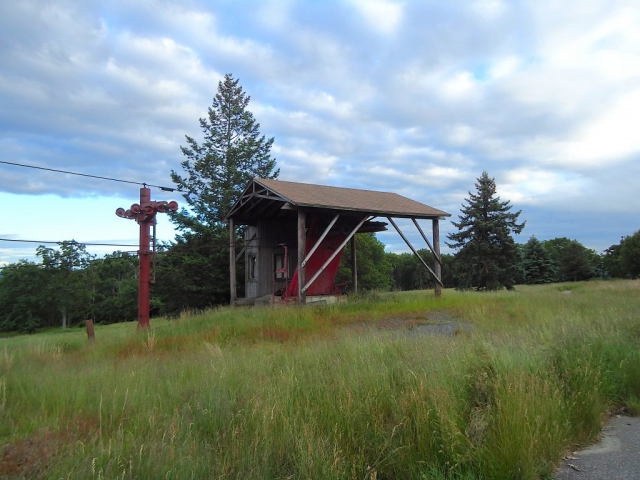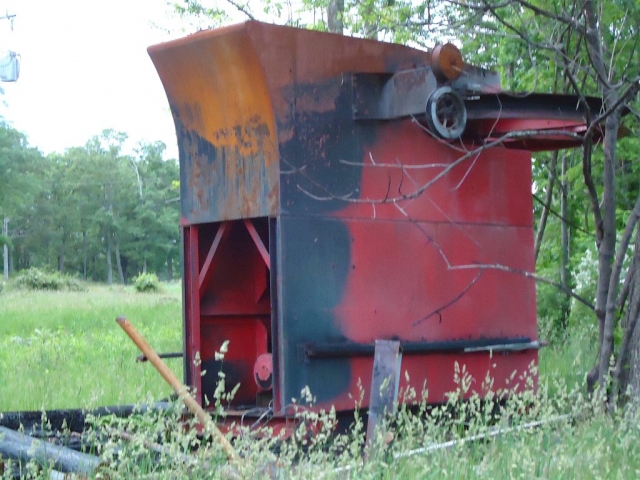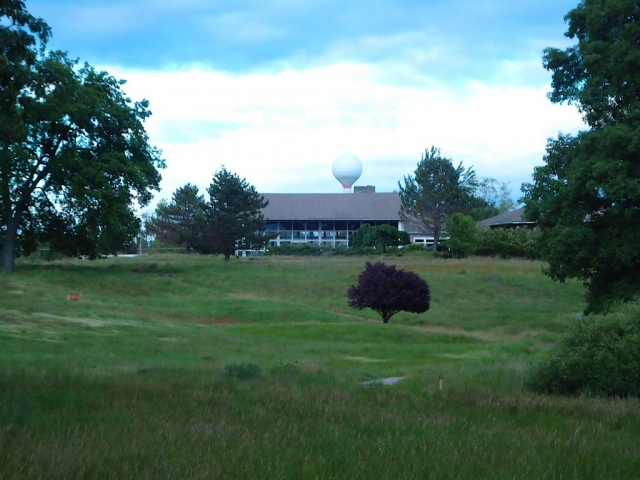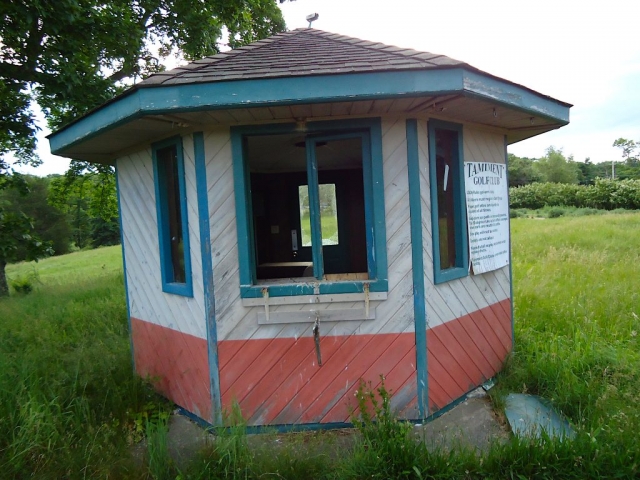A Hawk’s View
When I first entered the world of motorcycling, I quickly learned of all the talk in the New York/New Jersey area about riding Hawk’s Nest just outside of Port Jervis, NY. Its twisty appearance would show up in photos on forums by riders who have visited and many others would make plans to ride it when they had the chance.
Part of the route 97 scenic byway, my first time through was seventeen years ago and I’ve been back several times since then. I remember how we all thought the twisty part was so short but the other 70 miles doesn’t disappoint with good road conditions and great scenery. The route runs from Port Jervis, NY and ends in Hancock, NY.
Originally known as Mahackamack in the 1600’s, Port Jervis was raided and burned during the Revolutionary War and rebuilt over the next two decades. It later took on the name of Port Jervis after John Bloomfield Jervis, an American civil engineer. Today, Port Jervis struggles to find its economic basis with the obsolete canals and the decline of the railroads. We headed north up route 209 in PA making our way through the town of Milford and crossing over into Port Jervis. From there it’s a left onto route 42 and then a branch off onto 97.
Hawk’s Nest is by far the most discussed portion of this byway with its spectacular views of the mountainous area and the Delaware River down below. Its cliffside location requires the utmost attention while swerving through with the temptation to observe the scenery as something to be put off later during a stop on a return trip. The area is usually populated with parked bikes and cars with cameras soaking up the images. Once a dirt road in the 1800’s, this area almost never came to be as the original plan was to have this as a shoreline route. However, the Erie Railroad declined to sell the needed right-of-way and forced the state to construct the famous improvement along the cliffside as well.
As you exit the curves in a northbound direction, you’ll notice the remnants of the Hawk’s Nest Café on your left hand side which suffered a fire in 2002. Bought by Ron Babcock in 1999, the restaurant boasted a wonderful view of the area from its rear deck and was extremely popular among motorcyclists. There was talk for some time about Ron rebuilding the place, but searches on that story seem to dry up after 2010 when there was hope of opening the place back up in 2011.
Sixteen miles ahead we stopped at The Carriage House in Barryville, NY for lunch. Built in the early 1900’s, it is considered a designated landmark and seems to be one of the go-to places for bikers, especially with the absence of the Hawk’s Nest Café. After lunch, we grabbed route 434 over the Delaware River to return to Pennsylvania. Next time I think we’ll go the distance to the end of route 97 in Hancock, NY.
A Blue Mountain End to 2018
This ride found us in that perfect place between summer and fall weather. Ideal temps, sunshine, and picturesque roads were on the menu for today. A rider’s dream weather wise, the type of day you wish there were more of.
We started off on beautiful Cherry Valley Road which spans Stroud and Hamilton Townships with its mountainous views, horse farms, beautiful homes and even an old golf course converted to a national wildlife refuge. From here, we continued our way westward on Kunkletown Rd. through Kunkletown, Little Gap, and eventually Palmerton.
Officially incorporated in 1912, the area of Palmerton once played host to Native Americans and was eventually filled with early European settlers with roughly 5,500 people living there today. It was 1985 when I first came to Pennsylvania where I stumbled upon the town and was stunned by its lack of vegetation. Trees were either bare or absent where one would expect them to be. Lawns were sparse or absent and the area collectively reminded me of a war zone. It was puzzling at first until I learned of the zinc smelting operation that had gone on for nearly 80 years and finally stopped in 1980 due to a poor zinc market and environmental regulations.
Today, Palmerton is the location of the Palmerton Superfund site that was added to the National Priority List in 1983. The defoliated mountain slope, the cinder banks, soil, and ground and surface water is all part of the remediation process in place. The area fortunately no longer resembles the scorched look it had in the past with more greenery present each year I pass through it.
From Palmerton, we headed west on the serene Mountain Rd. in Germansville just below the mountains that contain the magnificent views from Bake Oven Knob. Part of the Appalachian Trail, the view from Bake Oven Knob is also accessible by a dirt road and a little bit of hiking. Last season, I muscled us up the dirt road on the Yamaha Royal Star Venture, something I may not want to try again. We had then hiked to the 1,500 foot elevation view which gives you one of the best views eastern Pennsylvania has to offer. For this ride however, we just absorbed the scenery surrounding us below as we made our way towards route 309 south towards New Tripoli, the home of the Blue Mountain Vineyard.
Gently tucked into the rolling hills of New Tripoli, Joe and Vickie Greff converted an old traditional farm into a beautiful 38 acre vineyard complete with a small lake, a nicely designed building, and wonderful views of the surrounding mountains. Reds, whites, blush and sweet wines make up the twenty wines they offer as we sipped through some of them with a sample list we purchased while discussing wine with their knowledgeable staff. We filled a bag with a Petite Sirah and a White Merlot before heading outside on their deck to take in the view. We also decided to venture through the vineyard itself which afforded a greater view of the horizon as we were surrounded by luscious grapes. At the top, I became curious by an odd looking device which at first I took as some sort of security camera set up. It may indeed have been outfitted as such but suddenly it gave off a series of bird calls, predatory bird calls I would imagine and it was obviously designed to keep away whatever is out there in the wild that would enjoy a snack or two of this wonderful looking fruit.
On our return voyage, I decided to alter the way back and pass over the Little Gap Covered Bridge in Lower Towamensing Township. It was constructed around 1860 and spans 73 feet across the Aquashicola Creek. It’s the only covered bridge I know of in the surrounding area.
The date of this trip was September 30th and we had no idea that as I write this story now in mid-November there would be a half a foot of snow outside. An early winter has probably made this trip our last of the season. NASA’s report on the low sun spot cycle is pointing to a rough one and quite possibly lower temps throughout the year for years to come. This was a fine winery and a nice little ride but we did have hopes of furthering our adventures a little deeper into 2018. Perhaps a break in the weather is forth coming which will allow us some additional saddle time, otherwise it looks as if it’s time to think and plan for next year’s trips.
The Rarest Of Them All
After a summer of heat and humidity that made riding more of a steam bath than anything else, we set out this mid-September day with max temps not even to reach 70 degrees Fahrenheit. A very welcome change.
Keeping to our theme for the second year now, we headed off to the Hewn distillery in Pipersville, PA. This required us to travel our well liked route 611, a mostly tranquil 109 mile highway with views of the scenic Delaware River and the old Delaware Canal. We passed the old Deer Head Inn, the oldest running Jazz club in the country, a place I had the privilege to perform several times some years back. The Delaware Canal, inspired by the success of the New York state’s Erie Canal, was built by the Commonwealth of Pennsylvania as part of a 1,200-mile system of canals to connect Philadelphia, Pittsburg, and Lake Erie. The 60 mile long canal was part of this work and was completed in 1832 for the purpose of transporting barges of coal. Today it is known as the Delaware Canal State Park and someday we’ll have to park the bike and explore its trails.
Sean Tracy, the founder and head distiller of the Hewn distillery, spent 25 years restoring and converting old American barns into unique homes and is host of the TV show “Barn Hunters”. After taking up the craft of distilling, he decided to combine his passion for old wood and distilling by experimenting with the aging process of his spirits with old, rare, and even extinct woods. This is the first distillery I’ve heard of that employs this method. We had a flight of samples and immediately realized that this distillery is among the best of all those we’ve ventured to these past two summers. Not only does his use of rare woods make this special, the time and effort in his distilling shines through thoroughly which is particularly evident in his vodka. Neutral spirits such as vodka cannot hide distilling flaws or shortcuts given its not aged or flavored to mask any imperfections. No worries for this distillery. The vodka was magnificent and the quality is present in all of their spirits.
As a bonus, within the same building, was the Bucks County Brewery which we had not anticipated. Tasting samples of Hewn’s spirts was enough alcohol for being on a motorcycle so we just took a chance by bringing home a Growler of their Chuicy Chowie Wowie IPA. This was a very fruit forward citrusy flavor with lingering hops. Thumbs up to this brewery, a job well done. Perhaps someday we’ll return to sample more.
The Hewn distillery also has a store located within Peddler’s Village in New Hope, Pennsylvania and so we thought we’d find out what this Peddler’s Village was all about. Just eight miles would have us pulling into the area, a 42 acre shopping mall development put together by the late Earl Jamison. Mr. Jamison traveled regularly to Carmel, California in the late 1950’s and early 1960’s. He became inspired to recreate a specialty shopping village back in his own county and in 1962, Peddler’s Village opened with 14 shops. Today, with over 60 shops, the village still exudes its Carmel, California influence with its very convincing old world style. It was convincing enough to make us believe it was a renovated town from the 19th century until we learned it only dated back to 1962. An unfortunate discovery since it meant we were older than the village ourselves! Wines, spirits, clothing, pubs and more populated every row and corner with brick pathways leading you through the lush green lawns and gardens. The most intriguing place for me was the “What’s In A Name” shop which housed dozens upon dozens of authentic antique maps from the 19th century, along with globes and other artifacts. Their specialty service is helping people discover their family’s history.
After some lunch, it was time to head back north as the days now are growing shorter. We also had the need to get that Growler of beer in the fridge soon as well. We’re not done yet with 2018, but the weather will soon work against us and our list of distilleries and wineries within a day’s trip reach grow smaller with each trip. Soon it’s going to be time to let the battery tender spend all the time with the bike while we watch the snow fall. During those days it’ll be my desire to come up with a new riding theme for 2019 with hopes to use our motorcycle camper to extend our trips and stories.
Sailing the Copper Seas
It was July 14th, and the summer weather continued its elevated temperatures and high humidity. This type of pattern seemed relentless this summer but at least it promised to be a dry day which seemed to be in short supply lately. The destination was the Coppersea Distillery in New Paltz, New York. Its dedication to old world methods intrigued me so off we went where some unknown surprises awaited us.
Like many of our rides to New York State, we started off on route 209 north which parallels the Delaware River through the scenic Delaware Water Gap National Recreation area. Our first town we reached was the historic town of Milford, PA, a town we’ve visited and spoke about before in previous videos. We then made our way through the town of Matamoras, PA where we crossed the Mid-Delaware Bridge into the town of Port Jervis, NY. This continuous steel truss bridge was constructed in the 1939 and has a bit of history of previous versions of itself that date back to the mid-19th century.
I first became familiar with Port Jervis back in the 1980’s when I had moved across the way in Montague, NJ. It appeared at that time to be an ailing town as the restructuring of railroads resulted in a decline in the city’s business and economy. Today, however, thousands of tourists and travelers pass through the area on their way to recreational activities in the Delaware Water Gap National Recreation Area and in 2008 it was names one of the “Ten Coolest Small Towns” by Budget Travel magazine.
The next part of the trip was a long stretch along the serene route 209 through towns such as Cuddebackville, Westbrookville, Wurtsboro, and many others. It’s an area where one can relax as much as a motorcyclist can while maintaining some alertness and we did so until we were interrupted by an unfortunate accident scene. It’s up close exposure to wreckage like this that reminds a motorcyclist of what they’re potentially up against at any given time. Bad timing, too much drink or speed from others are just a few of the reasons that can ruin your day in a split second.
With a refreshed sense of safety on our minds, we followed 209 up near Kerhonkson were we made a right onto route 44 which winds through the Minnewaska State Park Preserve. This 22,275-acre preserve quickly began to strut its stuff as we climbed to points with beautiful views of the Catskill Mountains. We had never been through this area and I did no research so every mile was an unfolding of new visual treats. We even encountered a rare hairpin turn for this area of the country during our descent which required a little extra attention in maneuvering. It seems some have not been so lucky in the past, even while in a car. From this point it was time to head east on route 299 towards New Paltz to turn up Springtown Rd just before town and stop at the Coppersea distillery.
I found the Coppersea Distilling alluring with its allegiance to traditional styles of distilling. The late co-founder, Angus MacDonald, even looked as if he had stepped out of the past. He was fascinated with old world methods and spent a great deal of time researching and learning the techniques of years gone by. Its name is a nod to the copper stills of the past that occupied space in almost every farm in early America. Everything about this place is a trip back in time with its chicken coop, barns and the old shack of a store where you can sit on the old furniture and enjoy their samples of spirits. Probably the most intriguing product is their Big Angus Green Malt Whisky. Being a rare distillery that malts its grain in –house, it’s capable of using fresh green malt immediately which preserves the earthy, herbaceous qualities that are lost in the normally kilned malt. This whisky, honoring the memory of its founding Master Distiller, is the most unique whisky I’ve ever tasted. Coppersea has been looking to set itself apart from others and I have found them to be highly successful in this endeavor to do so. For the whisky connoisseur, this is a place you don’t want to miss.
Our return trip was simply to be a backtrack of our morning route which began with a second look at the Minnewaska State Park. A tower like structure in the distance absorbed our attention as we began the ascent, it was something I knew I would have to investigate further when we got back home. My research revealed this object to be the Skytop Tower at Mohonk which was built in 1921 in memory of Albert and Alfred Smiley, the founders of the even more fantastic Mohonk Mountain House. This is a place worthy of its own separate trip that we hope to take before this riding season comes to an end. Its scenery and history appear to easily fulfill a full day of riding and exploring and we hope to present our findings here on our channel someday soon.
We stopped before exiting the park for a view of the Catskill Mountains. The haze on this hot and humid day obstructed the horizon somewhat, perhaps our return trip will occur during a clearer afternoon. It was a pleasant and uneventful ride home and a ride that gave reason for yet another.
250 Miles of the Catskills
This particular Saturday marked the official end of a heatwave with moderate temps, low humidity, and a near cloudless sky. It had “motorcycle riding” written all over it. The only piece missing to this day was my wife Denise who was away for the weekend. Sullivan and Delaware counties of New York were on tap for this ride. The roads up there are gorgeous and quiet but I did have an ulterior motive for choosing the area. Three micro-distilleries were in the path of my route as it was time to stock up for the summer with some superior spirits this area of the state is known for.
Unlike most of our rides, where we’re off on our own, I was to meet Keith and Mary on their Kawasaki Voyager and Ashton on her Yamaha Road Star. I was to lead the group to the three distilleries and a loop around the Pepacton Reservoir. Some areas I had been to before, other I have not. But, I trusted New York State to deliver great riding nonetheless.
We started the day with the 29 miles route 402 offers as it spans Monroe and Pike counties of Pennsylvania. Assigned its route number in 1929, we rode it from its start at the junction of 209 to just shy of its end at route 6 by exiting onto route 84 to pick up 434 in Lords Valley. 434 turned into 55 as it crosses the border into New York State and the temps dropped slightly as we rolled further north almost to the point where it could be slightly chilly but not quite.
Route 55 will take you all the way up to 17B in Bethel but a large corner can be eliminated on your way to the Catskill Distillery by making a left onto the smaller and more scenic Dr. Duggan Rd. For this day, the Dr. Duggan Rd included a close up view of a deer as added scenery. I had just turned my camera back on and glanced to my right only to look back and see the deer coming from my left. It happened so fast I didn’t even have time to seem to worry about it. I grabbed a fist full of brakes at the last moment and it was just enough to put enough space between us for him to slip by. That was the closest I’ve come to a deer while on a bike, I hope that record will stand forever.
Fortunately it was time for a break after that episode as the Catskill distillery was almost in sight and it was time to stop and pick up another bottle of their fine spirits. Monte Sachs is the owner and distiller who, while attending veterinary school in Italy, learned the art of distilling on the side. Today he operates a beautiful place complete with a store outfitted with a bar from the 1939 World’s Fair and the Dancing Cat Saloon with outstanding food. This is my third trip here, their spirits are that good. Hints of the ‘60’s are scattered around the grounds with its famous peace sign out front which tells you you’re just across the street from the site of the 1969 Woodstock concert.
I loaded the bike with a bottle of their “Fearless” straight wheat whiskey and we all headed over to the concert field and got a look at the monument which was put there in 1984. Once a farm, the field now has the Museum at Bethel Woods and the Bethel Woods Center for the Arts in the background. It’s interesting how a site chosen out of near desperation for a planned concert event went on to become a maintained landmark complete with an arts center and a museum commemorating that day. Next year is the 50th anniversary, one article I’ve read claims that Michael Lang has revealed plans for a possible 50th anniversary concert that August.
It was time now to head to Roscoe, NY to visit the Prohibition Distillery. We left the concert field by way of Hurd Road and I had my GPS bark out the orders to Jim Stephenson Rd, then a right onto Behr Rd. then a left onto 144 to route 52 north, a very nice road in great condition with hardly any traffic at all. This brought us to the little town of Youngsville. It was one of those towns you’re riding out of almost before you realize in you’re in it. It was very hard to find any information on this area, the most significant place seems to be the Clair Inn here on my right. (as seen in the video) It’s still open today and it appears there’s some rich history with this building. From there it was a left onto 149 and another left onto Huber Rd. Huber went to Gulf Rd and finally Stewart Brook Rd into the town of Roscoe. Most of these roads were very secluded making a rider feel they had the pavement all to themselves. An occasional farm or home trickled by us as we rolled along at a relaxed pace. The day was so pristine, there was no need to rush anything. Roscoe was called Westfield Flats in 1789. It was the home of the Delaware Indians where wolves once roamed freely. It is named after the late Senator Roscoe Conkling who served form March of 1867 to May of 1881. Its 2010 census revealed a population of only 541 people.
We pulled into the Prohibition Distillery, a 1929 firehouse with an outdoor bar and a 20’s styled store inside. This would be my second visit here as I grabbed a bottle of their bourdon and another glance at their distilling equipment which is one of the more sizable setups I’ve seen among all the mico-distilleries I’ve visited. We took a walk down Stewart Ave and stopped in at Raimondo’s for some lunch where Ashton was generous enough to pay for the lunch! It was a crowded place and we had to wait a bit for the food but it was excellent.
From here it was time for the second half of the trip which was to start with a ride around the Pepacton Reservoir. We left Roscoe by way of route 206 north where we would go right onto route 30 to take the reservoir loop. This reservoir was formed by impounding ¼ of the East Branch of the Delaware River. New York City purchased the valley it’s made from in 1942 and displaced 974 people and destroying four towns in the process. Arena, Pepacton, Shavertown, and Union Grove were all wiped out. It also submerged ½ of the Delaware and Northern Railroad in the process. The dam, which is located in Downsville, PA, was finished in 1954 and the flooding was complete in 1955. It’s 15 miles long and about 7/10 of a mile wide at its widest point. It supplies New York City with 25% of its drinking water. The name of this body of water comes from a Lenape Native American term which means “marriage of waters.” It’s a beautiful place for a ride and I soon noticed a collection of motorcycle headlights in my mirrors as we went along. It’s obviously a popular place among riders.
After the bridge, I left route 30 to make a left onto BWS Rd No 4. I had hoped to then go left onto BWS Rd No 7 but it came up sooner than I anticipated and I don’t think the sign had that exact name on it. I continued straight on BWS Rd No4 which turned into Tremperskill Rd and as a consequence we didn’t make it to Downsville to see the Downsville Bridge. This 174 foot bridge built in 1854 spans the East branch of the Delaware River in Downsville, NY and was designed by a Scottish immigrant named Robert Murry. It is now the longest covered bridge in NY since the 232 foot Blenhiem Bridge was destroyed by the Tropical Storm Irene in 2011. We’ll have to see it another time as I was too busy getting lost and taking us up to the town of Andes. I knew I was a bit lost but forged on with the thought that eventually we’d make it to Walton, NY for the final distillery visit. The settlement of Andes began in 1784. We didn’t spend any time in this spot but it seemed to be a quaint little town worth stopping in some day in the future. I did learn after the ride that Susan Dey of the Partridge Family fame moved to the town in 2007 and still resides there today. I went on through Andes only to stumble upon an area I was lost at just about a month ago. It was then I realized where I was and thought it would be a good time to take a short break and take in the view. Heading eastward on route 28 out of Andes will bring you to Finkle Rd and the start of the Palmer Hill Trail. At this spot, one can get a remarkable view of the “forever wild” lands protected for the public by New York’s state Constitution. New York City also protects the land in this area that feeds its water supply. More than 500,000 acres throughout the Catskills have been preserved to provide clean drinking water, an expansive wildlife habitat, outdoor recreation and solitude.
We made the decision to backtrack into Andes to get some gas and recalculate our route to Walton, NY. There was one gas station in Andes and I led the group into the lot only to discover they were closed. After asking someone for directions to another station, we made the 15 mile trek to Delhi, NY. Delhi was named after the city Delhi, the capital territory of India. It had a population of 5,117 at the 2010 census and it is the setting for the classic 1959 novel “My Side of the Mountain” by Jean Craighead George. Born in 1919, Jean’s resume boasts over one hundred books for children and you adults during her rich career. It’s beyond the scope of this video, but it may be worth the while to read up on her life as she seemed to be a remarkable person.
After our gas stop, we turned left onto Delhi’s Main Street which is route 10 south to make our way to Walton, NY. Route 10 really opened up nicely after getting out of town and once again it was almost as if we had a road to ourselves. Along the way we passed the Saputo dairy company. Founded in 1954 by the Saputo family, it is today one of the top ten dairy processors in the world. They operate in Canada, the US, Argentina, and Australia. Their products get sold in over 40 countries worldwide.
William Walton was born in 1706 and was the son of Captain William and Mary Walton. The young William followed his father in the shipping and mercantile business and became a well-known figure in the colony of New York. His nephew of the same name owned 22,000 acres with most of it becoming what is known as Walton, NY today. It is the birthplace of William B. Ogden, the fist mayor of Chicago and the founder of the Chicago & Northwestern Railroad line.
A computer programmer, abstract water color painter, and distiller, Cheryl Lins, owns and operates the Delaware Phoenix distillery in the town of Walton, NY. While searching for distilleries to visit in 2017, I came upon her web site and was instantly intrigued by her diverse and artistic background and impressed by her notoriety with articles in such papers as the New York Times, interviews on pod casts and YouTube videos. She is an expert in the spirit known as absinthe. Known in historical literature as “the green fairy” it was once outlawed but in recent years made legal again. It is a highly alcoholic beverage derived from botanicals. You’ll find wormword stalks, fennel, anise, hyssop, lemon balm, lemon thyme and even violet in her shop that are mostly organic and local with some being homegrown as well.
Around the corner from Cheryl’s distillery is Breakeys Liquor Store on Bridge St who sells Cheryl’s products. I decided to stop there first before seeing if Cheryl was at her place and it was a good thing I did. I asked the woman behind the counter where Cheryl’s spirits were and she pointed them out while saying the words “what I have left”. When asked what that meant she informed me that Cheryl was in a bad car accident and it was unknown if she would return to her distillery someday. Cheryl had already stopped making her whiskeys this year, sticking only to her varieties of absinthe. I grabbed one of the remaining bottles of her rye as that most likely will never be made again. I also grabbed a bottle of her absinthe as I asked more questions about Cheryl. I have found nothing about this accident and have no idea if this distillery will operate again. Payers go out to Cheryl for a speedy recovery. Perhaps someday I’ll get another chance to meet her.
With all my destinations reached for the day, it was time to start thinking of a way back home. We started off by continuing on route 10 south which once again opened up into tranquil riding with hardly a hint of other vehicles most of the time. From there we got onto route 268, another enjoyable road and then to route 191 to cross over the Delaware into Pennsylvania from Hancock, NY. This was an area that triggered a flashback for me from nine years ago. It was the end of a three day trip that punished me with the worse rainfall I’ve ever ridden in. The bridge was so heavily cloaked in fog that night it felt like I was riding into an abyss with its beams only showing themselves as I came within several feet of them. Once crossing over in Pennsylvania, the trees overhead seemed like the walls and ceiling of a wet cave as water rushed across my face shield. Today was a welcome contrast to the last time I rode this area as the day was taking on its later afternoon look.
Incorporated as a borough in 1831, Honesdale, PA would be the last significant town we’d ride through that day. Named after Philip Hone, former mayor of New York City and president of Honesdale’s Delaware and Hudson Canal Company, it offers boating, fishing, hunting, skiing, skateboarding, and rafting. It’s a very pretty town with hundreds of Victorian age structures.
We turned onto the Owego Turnpike outside of Honesdale which brought us across the top of Lake Wallenpaupack on route 590 and route 6 with a turn onto route 402 south for our final leg before separating for the day. Distilleries, reservoirs, whatever it may be, New York State always delivers a most satisfying day of riding. It was now time to go relax on the deck and open some of these New York spirits.
The Grey Towers of Milford, PA
Living in Monroe County, PA gives us immediate access to the Delaware State Forest. 83,519 acres spanning four counties offering boating, camping, scenic beauty and of course, great roads for motorcycling. Today we’re off to see Grey Towers in Milford, PA.
Milford was founded in 1796 after the American Revolutionary War as a settlement on the Delaware River by Judge John Biddis. He named the settlement after his ancestral home in Wales. I first visited Milford in 1984 and it seems to have retained its look and feel to the present day. Restaurants, antique shops, old hotels, bars, museums, etc. offer more than enough for a day trip to this area with even more things to do within an hour’s radius of this area. A quick google search will yield enough things to do in the area to warrant many return trips.
The Grey Towers National Historical site is located just off of route 6 west of Milford in Dingman Township. It is the ancestral home of Gifford Pinchot, the first director of the United States Forest Service and twice elected governor of Pennsylvania. Built in 1886, it was donated by the family to the Forest Service in 1963 and three years later was designated a National Historic Landmark. Its French chateau appearance is complimented with exquisite landscaping and the 102 acre grounds to make for a day trip of exploring. Self-Guided tours of the grounds are permitted. We paid for the tour of the inside and wandered around the grounds a bit waiting for our start time.
The rooms inside were wonderful but we were disappointed it only included the first floor. The tour features a large entrance hall, billiard room, dining room, library, and a sitting room. The guide will also take you outside to view the grounds close to the house and as with the inside, there are numerous stories and history behind many of the other structures all around you. Probably the most famous story is the visit from President John F. Kennedy in September of 1963 to accept the donation of the site to the United States Forest service. It was to be one of the last public appearances of the president as he was assassinated less than two months later.
It was time to head home as we made our way back through the town of Milford to backtrack on route 209 south that cuts through the mostly undeveloped Delaware State Forest. We’ll be back there again someday to hike the grounds and of course spend some time in the town of Milford. It’s a nice area to point the bikes towards.
Lake Wallenpaupack and a visit to the Wood Winery
We were excited that the end of May was finally offering warmer days and were equally excited to visit the Wood Winery in Madison Twp., PA. This winery would be the smallest we’ve visited thus far and we were hopeful the small family owned atmosphere would yield a fine product.
We took route 191 north in order to first ride up the east side of the third largest lake in Pennsylvania known as Lake Wallenpaupack. Its 52 miles of shoreline and 13 miles in length offer scenic travels for any vehicle but there’s never a shortage of motorcycles going in one direction or the other around here. Lake Wallenpaupack was created by the Pennsylvania Power & Light company in 1926 for hydroelectric purposes and flood control. Today, it is best known as a major recreation area with camping, swimming, boating, restaurants, and more.
The area was named Wallenpaupack by the Lenape Indians. The name means “The Stream of Swift and Slow Water.” The power company constructed a dam on Wallenpaupack Creek at Wilsonville and a levee named the Tafton Dike. It required 2,700 men working from 1924 to 1926 to complete and 7 months for the reservoir to fill.
We sat at the dam for a while, a place that offers probably the best view of the water before deciding to head down 590 south to 690 into Madison Twp. There are strict rules in place around the area of the lake to preserve the natural shoreline. Space here doesn’t permit all that could be discussed about this area, places like the Lacawac Sanctuary, the Claw ‘n Paws zoo, are just a couple of examples of places to stop which would make its own story for a future time. We departed the top of the lake and took route 590 south to 690 into Madison Twp., the home of the Wood Winery.
Ken and Donna Wood, along with their family and their dog own and operate the Wood Winery which could be mistaken as just another residency if it were not for the small sign out front that you happened to be looking for. This is a small batch winery sourcing their fruits and grapes from Pennsylvania farms. They also carry local cheese, honey, crackers, preserved goods, syrups, and more. We picked out a number of wines to taste and were pleased with them all. As we had hoped, the small size of this winery led to good quality that we think either rivals or surpasses wines of much larger establishments. After the tasting, we sat outside with cheese and crackers and had a conversation with Ken and Donna as they tended to their gardens. If you’re looking for quality wines in an intimate setting, this is your place.
We headed to south 196 to begin our way home knowing we’d return some day. From there we hopped on route 940 in Mt Pocono and then to 191 to bring us back in town. I caught a little footage of the old abandoned Penn Hills honeymoon resort near the end of our ride. A scene all too common throughout this region as many of these resorts have fallen into the abyss of times gone by.
We hope this video encourages those close enough to take the time to ride the region of Lake Wallenpaupack. It is abundant in scenic travelling.
The Sand Castle Winery and a visit to Frenchtown, NJ
Seventy two acres overlooking the Delaware River hosts the 10,000 square foot “Sand Castle Winery” and its vineyard in Bucks County, PA. We took route 611 south to River Road in Kintersville to see what brothers Joseph and Paul Maxian started here in 1974. Born and raised in Czechoslovakia, Joseph and Paul combine European and American traditions at their winery which was inspired by a magnificent castle in their hometown of Bratislava.
As mentioned in some of our previous videos, route 611 never disappoints and we were further pleased with most of River Road, also known as route 32. We headed south along this quiet road with views of the Delaware River and the Delaware Canal Trail before making the hair pin turn into the entrance of the Sand Castle Winery. A narrow road slowly lifts you up above the level of the river as the “castle” makes its way into view.
We declined the tour and elected to just have a tasting session at their bar which turned out to be one of the more educational tasting sessions we’ve experienced. Their wines have pleasingly complex flavors though not too many suited out personal tastes. That’s not meant as criticism, just that they offered little that matched our personal palates. We settled for a bottle of their Alpine Spice, a blend of their Chardonnay and Riesling which was delicious warmed, especially with a little white Rum added in. Our tasting tour covered ten wines with lots of information provided by our bar tender. Before leaving, we walked throughout the building to take in their art gallery and the rooms where their parties and wedding receptions take place.
We headed north on River Road with the intent to cross a small bridge into New Jersey which turned out to be Frenchtown. Frenchtown is a borough in Hunterdon County with a small population of 1,373 according to the 2010 Census. A six-span covered wooden bridge built in 1841 gave way to today’s Uhlerstown-Frenchtown Bridge but the five piers still stand today. As early as 1757 streets began being laid out along with building lots that was to be called Alexandria in honor of William Alexander, Lord Stirling. By 1794, the land was sold to Paul Henri Mallet-Prevost, a Swiss fugitive from the French Revolution. He and other settlers were French speaking which eventually led to the name “Frenchtown”.
Places to eat and shops fill the welcoming streets along with places to spend the night including the Frenchtown Inn, an original hotel of the area. We sat and had a couple of slices of some delicious pizza and then made our way back over the bridge into Pennsylvania to finish the day.
It was a decent day weather wise for this late day in April, especially given the long hard winter we just experienced. The old-fashioned charm of Frenchtown will definitely bring us back some day and we’re interested in exploring route 32 further south. The entire Bucks County area seems to be a wealth of places to visit, I’m sure this won’t be our last video of this area.
The Fonthill Castle
The prolonged winter finally teased us with a couple of Spring days before returning to its unseasonably cold weather and so we grabbed the moment to head to the Fonthill Castle in Doylestown, Pennsylvania where symmetry, blue prints, and other typical architectural practices yield to the creative mind of Henry Chapman Mercer.
Our trusty route 611 provided a gentle path into Doylestown with views of the old Delaware Canal that once carried anthracite coal, gravel, limestone, cement, and lumber from the northeastern part of the state all the way to Philadelphia. Many riders were out that day also taking advantage of winter’s brief time off as we allowed the weather to melt away both the cold and the confinement these past months brought to the region. We rolled up the gravel path as the castle slowly revealed itself under the clear sky and the closer we got the more magnificent it appeared to be. We arrived a little early so we walked around parts of the 70 acre property before returning to the entrance for our scheduled tour.
In 1908, an archeologist, artifact collector, tile maker, and author, Henry Chapman Mercer began pouring as much of himself into this great structure as his eight to ten unskilled laborers who poured the hand mixed concrete for three summers to create this 44 room work of art. 10 bathrooms, 5 bedrooms, 32 stairwells 200 plus windows, and 18 fireplaces display the thousands of tiles all designed by Henry himself. Stories of Columbus, a map of Cortez and many other allegorical designs are in abundance everywhere the eye looks. Stairs are not of consistent height, none of the windows share the exact dimensions, pillars vary in their size and shape and other parts of the castle boast their asymmetry but it was all done by Henry’s design, it was completed in such a manner that is pleasing to the visitor. The flow of the irregularities seem to make sense and are welcoming to the eye that has been so exposed to the precision of today’s architecture. It is poetry and art that has jumped off the pages and canvases to become a home.
The uniqueness of this place is such that we think it best to pause the narration to just view the photos for a moment.
See the photos in our YouTube video below
The tour lasted approximately 90 minutes, much to our delight, 30 minutes longer than advertised. There is so much to see around each corner that we think it would take several more hours to absorb it all. Perhaps we’ll return again someday but at this point in the day it was time to ride the 6 miles for a visit to the Buckingham Valley Vineyard.
Buckingham Valley was one of the first wineries started under Pennsylvania’s Farm Winery Act which allows wineries to sell wine directly to the public if it’s made from the grapes of Pennsylvania. Since 1970, the vineyard and winery have been owned and operated by Kathy and Jerry Forest along with their sons Jon, Kevin and Chris. The place felt so laid back and therefore it came as no surprise to read on their web site that, “it has kept the laid back attitude set by its founders: no quotas, almost no staff (just family and friends), no guided tours, no yoga in the vineyard, and no BS.”
Five dollars will buy you the privilege of taking home one of their small wine glasses and 8 samples you can pour yourself. That scenario gave us ample time to pick out and purchase our favorites but it also allows for some to be rude by standing in front of the sample bottles consuming as much wine as they can.
We made our picks from their extensive list and added some cheese to our purchase and headed outside to eat a little and get back on the road. We met Tommy and Lynn who offered space at their picnic table saving us from having to sit on the ground. We sat and talked as they treated us to some treats from Ely Farm products located in Newtown, PA a place we’ll have to stop by next time we’re down this way.
We rolled back up north taking 611 again as the sun began to set and the brief blast of Spring began to make way to the cold air again. Henry Mercer said he had hoped what he was leaving behind would be enjoyed by future generations. We can certainly say “thank you” to Henry today for such a great time and we’ll have a toast with these excellent Buckingham Valley wines to Henry and to all those who labored to create such an amazing place.

